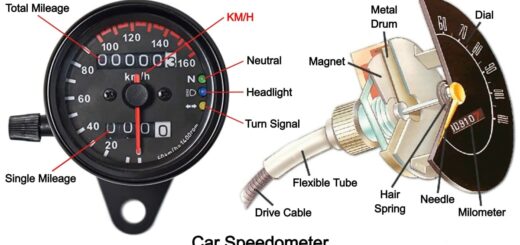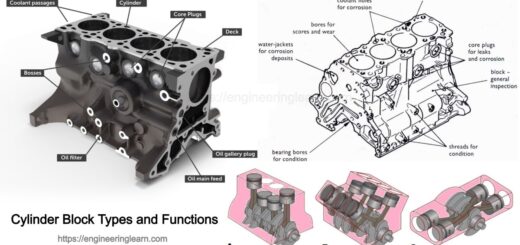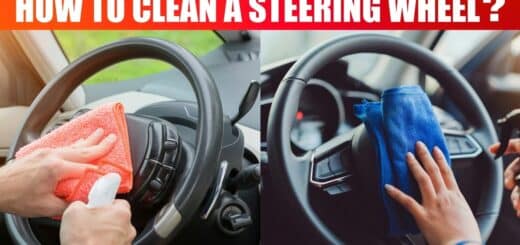18 Parts of Tires and Thier Uses [With Pictures & Names]
![18 Parts of Tires and Thier Uses [With Pictures & Names]](https://engineeringlearn.com/wp-content/uploads/2023/06/Parts-of-Tires-1024x539.jpg)
Introduction
18 Parts of Tires and Thier Uses [With Pictures & Names]: – Modern radial tires utilized on passenger vehicles and light trucks are shockingly complex. While the tires may not be among the first things at the forefront of your thoughts while buying a vehicle, they probably ought to be. While tires in all actuality do will more often than not get overlooked, they are apparently the most important part of your vehicle. The Tire can further improve the performance and execution of your vehicle by allowing it to start, stop, turn, and handle unexpected road conditions overall to the best of its ability.
What are Tires?
A Tyre (or tire) is a circular and ring-like part of a vehicle that interacts with the ground. Tyre are fitted on rims and filled with compressed air. The most well-known applications of tires are for transportation purposes, for example, automobiles and bicycles. Tires are a driver’s sole contact with the road, transferring actions like steering, braking, accelerating, and turning. Great tires are fundamental for street footing and supporting the heaviness of your vehicle. Tires have a couple of distinct parts that serve explicit functions. Capitalize on your driving experience with high-quality tires.
Your vehicle will really want to efficiently and productively deliver power to each of the wheels, and thus, the tires will put it to the pavement. Above all, remember not to ignore any issue that you think might be related to your tires. Nothing is worth taking a chance with your safety, that is the reason it’s in every case better to remedy what is happening next.
Parts of Tires
It is good to know the various parts of a tire so you can properly maintain them or buy the kind of tire that suits your requirements. What’s more, you ought to know the purpose and function of each part. Below we discuss about different parts of Tires:-
- Casing
- Beads
- Bead Reinforcement
- Bead Filler
- Bead Core
- Bead Apex
- Bead Chafer
- Sidewall
- Radial Cord Body
- Shoulder
- Belt Plies
- Inner Liner
- Tread
- Sipe
- Groove
- Rib
- Wear Bar
- Valve Stem
1. Casing: ( Parts of Tires )
The Casing, likewise referred to or alluded to as the carcass, is the inside of the tire. The casing will provide a cushion and contains the air that permits the tire to work accurately. It works in a similar way as a traditional internal tube. The casing doesn’t allude to the air that it contains, just the parts of the tire.
2. Beads: ( Parts of Tires )
Tire Beads hold the tire to the wheel’s rim which is the external part of the wheel’s edge. The tire beads are there to keep the tire from sliding awkwardly while it is in motion. These tools ensure or guarantee the tire stays balanced by getting distributed all throughout the tire evenly. They additionally limit the vibration of the vehicle, and that implies you will feel more secure while driving your vehicle.
3. Bead Reinforcement: ( Parts of Tires )
Another important part of the tire is Bead reinforcement. The Bead reinforcement will improve the directional stability of the tire. It will likewise assist with handling and steering response.
4. Bead Filler: ( Parts of Tires )
The Bead filler is firm and dense and will help how the tires will perform while driving. The Bead filler goes about as a shield to safeguard the tire bead from potential harm from the road. This rubber compound is found close to the tire bead’s steel wires, and it reduces the flexibility of the wires and diverts damaging forces.
5. Bead Core: ( Parts of Tires )
The Bead core is made from steel wire that is embedded or implanted in rubber. The core will ensure or guarantee that the tire will hold firm to the wheel’s rim.
6. Bead Apex: ( Parts of Tires )
The Bead Apex is a hard or soft rubber compound that envelopes the bead and reaches out up into the sidewall. The bead apex works towards the same end that the dab reinforcement does. Be that as it may, the Bead Apex will likewise give the driver more comfort while steering the vehicle.
7. Bead Chafer: ( Parts of Tires )
The Bead chafer Safeguards the body plies against abrasion from the steel bead wires and assists with solidifying the bead area of the tire. The tire bead area from chafing effects and damages brought about by the rim.
8. Sidewall: ( Parts of Tires )
The sidewall of a tire is the part that we most frequently see as we approach our car or truck. It is the part that (with the assistance of air pressure) holds the vehicle up. The sidewall is essential for ride comfort yet in addition plays a role in grip. Low-profile tires (tires with a short sidewall) have a harsher ride because of the lack of height able to absorb bumps as well as rough roads. The advantage of a low-profile tire, anyway is the lack of flex assists keep the tire tread in better contact with the road.
9. Radial Cord Body: ( Parts of Tires )
The Radial cord Body will give solidarity to the tire. It will likewise transfer force that impacts or influence the tread to the wheel. Body piles make up the cord body and comprise fabric cords coated or covered in rubber. The body piles can be made of various fabrics which include polyester, rayon, and nylon.
10. Shoulder: ( Parts of Tires )
The outer or external edge of the tread that wraps into the sidewall area is known as the shoulder. The shoulder contains tread grooves that permit it to eliminate water from underneath the tire and push it out and to the side of your vehicle or truck.
Tire shoulders will generally take a lot of maltreatment as it is the external and inward-most portion of the tire and it comes into contact with the road. At the point when a tire is punctured in the shoulder area it can not be patched or fixed. The steel belts don’t reach out to the shoulder of the tire and subsequently there isn’t adequate inward support to safely anticipate that a patch to hold and the inward structure is not be compromised.
11. Belt Plies: ( Parts of Tires )
The Belt plies functional capability as the structure of the tire and give the solidarity to contain the inflation pressure.The belt plies will give solidarity to the tire tread and furthermore improve fuel efficiency, traction, life expectancy as well as durability. Likewise, they will assist the tire with keeping its shape and provide directional security. It additionally decreases rolling resistance.
12. Inner Liner: ( Parts of Tires )
This is the innermost layer of a tubeless tire that keeps air from entering the tire. Considerably under pressure, this rubber compound will hold air and works along these lines as an internal tube. A good inner liner will assist with maintaining your tire pressure which will help you with getting better fuel economy and lengthen the life of your tires.
13. Tread: ( Parts of Tires )
The Tread is the part of the tire that makes contact with the outer layer of the road. Tread patterns vary significantly contingent upon the utilization for which the tire is optimized. For example, rough terrain tread patterns will have large track blocks to dig into softer landscapes and maintain traction. All-season tires will have a tread pattern streamlined for gripping asphalt and grooves designed to clear water efficiently to forestall hydroplaning. Tire tread assists vehicles with cornering more tight, accelerating more smoothly, and braking reliably. Tire tread is additionally equipped for assisting in maximizing fuel efficiency.
14. Sipe: ( Parts of Tires )
A sipe is a small slit on the tire’s surface. Tire siping is when additional slits are sliced into a tire’s tread to assist traction. They are essentially designed to further improve traction in poor weather conditions. Snow and mud tires will have hairline sipes added to increment traction intended for these conditions.
15. Groove: ( Parts of Tires )
The spaces between two adjacent treads ribs are moreover called tread grooves.These permit or allow water to successfully get away. Notwithstanding the voids permitting the tread blocks to have additional biting edges to provide traction, the grooves channel away downpours, slush, snow, and mud. Lateral grooves primarily provide traction however allow water to be ejected out the sides of the tire.
16. Rib: ( Parts of Tires )
Ribs are circumferential treads that have grooves on one or the other side. Track blocks are grouped into ribs. Tires with an all the more heavily ribbed design will have less rolling resistance and are great for heavy highway driving.
17. Wear Bar: ( Parts of Tires )
The wear bar is a feature that is embedded or implanted into the grooves of the tread and runs across the whole width of the tire.The wear bar is raised marginally by 2/32″ (1.6mm) over the lower part of the tread voids. Whenever the tread blocks wear out to the point that the tread blocks are a similar height as the wear bar, the tires are worn out and ought to be replaced.
18. Valve Stem: ( Parts of Tires )
The valve stem is made out of three principal parts: the body, the core, and the cap. Moreover, newer vehicles likewise have a sensor located toward the end of the valve stem that will alert the user assuming the tire pressure is excessively low. The valve center is a small metal piece that threads inside your tire valve stem. This valve core is screwed inside your tire’s valve stem to forestall air loss. The valve core is tightened into the valve body to ensure or guarantee that air doesn’t seep through and forms a decent seal.
The valve cap may likewise prevent air loss since it has a rubber seal inside it. On the off chance that debris does get into the valve core, it could cause corrosion. Moisture can likewise find its way into the valve stem. On the off chance that this happens and that moisture freezes, you could end up with a punctured tire or progressive air loss.
Conclusion
The chief functions of a vehicle’s tires include or incorporate supporting the vehicle load, sending foothold and slowing down forces to the road surface, and changing and maintaining with the course of the travel. The most widely recognized applications of tires are for transportation purposes like autos and bicycles. It is likewise essential to investigate your spare tire and ensure it is ready to be utilized if necessary. Know where the vehicle’s jack and lug wrench are located and ensure they are ready to utilize.There are a few other unique tires utilized for explicit purposes, for example, snow tires, which are utilized on snow or ice. High-performance tires, entire season tires, off-road tires, and mud-terrain tires.













